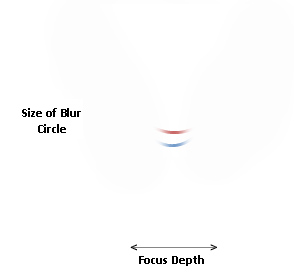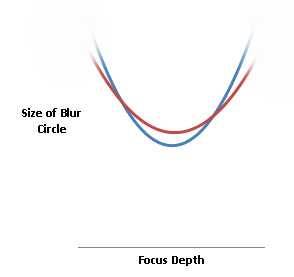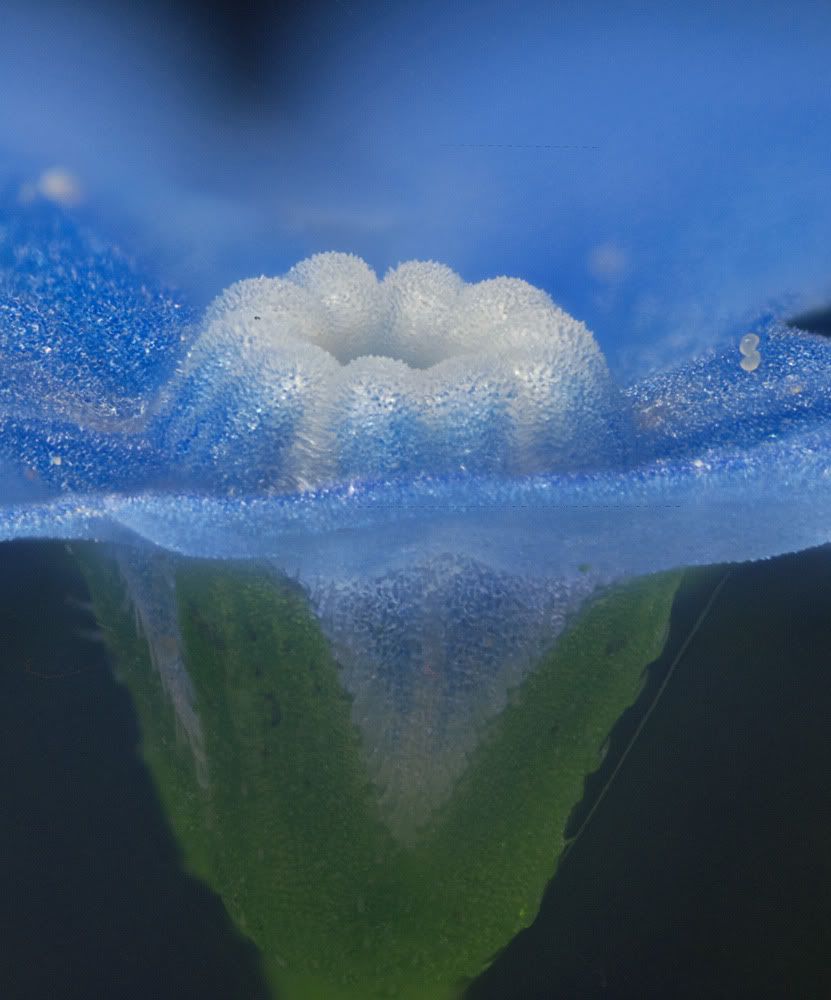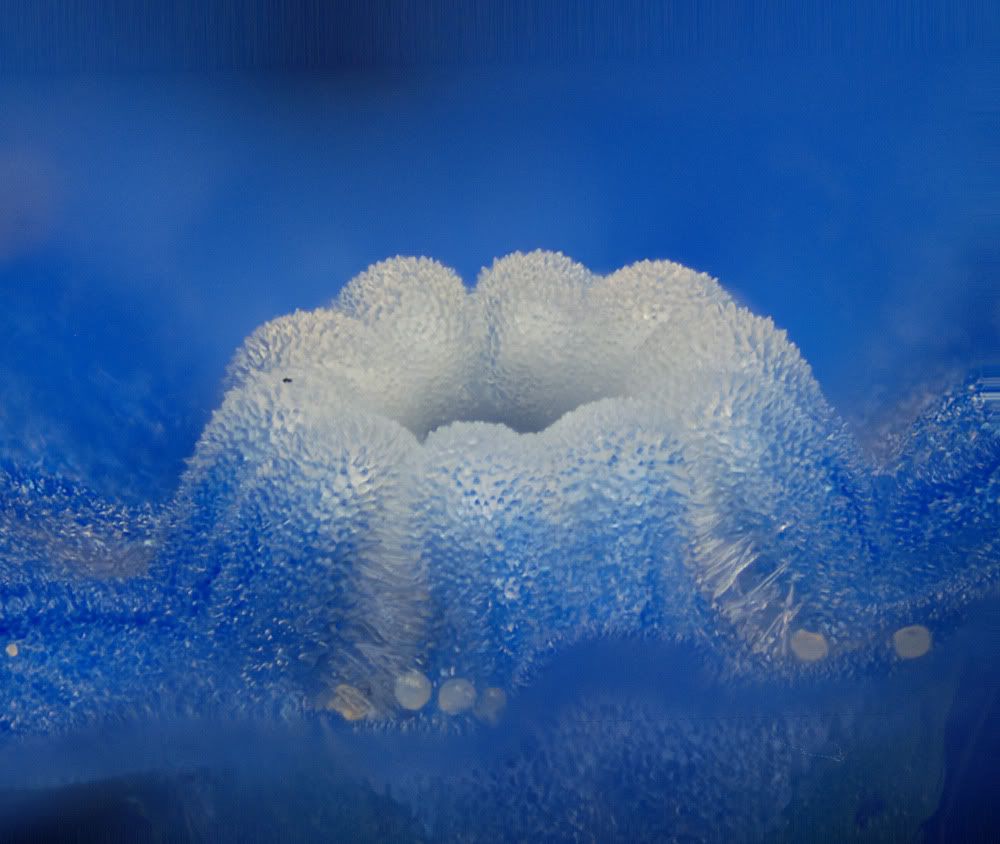No, it doesn't.Regarding the difference in NA between the two lenses used for comparison to the JML lens, f/3.5 vs. f/2, how significant is this in terms of diffraction? At 7.5x mag on the D700, EF = (1+7.5)*3.5 = f/29.75 vs on the Canon at 7.34x, EF = f/16.6, how significant is this? Does it fully explain the perceived difference in apparent sharpness on the Canon 4.7µm pitch sensor?
Before showing the images, I should explain some theory. The calculation is not as simple as (m+1)*f. There is an additional issue called "pupil factor", which can cause the working aperture to be larger or smaller than predicted by (m+1)*f. For the OM 20/2.0, the pupil factor is about 0.75 (rear pupil smaller). At 7.34X, this means that the working aperture is actually about f/21.5, not the f/16.68 that would be predicted by ignoring it. On a quick measurement (calipers by eye at arms length), the JML lens seems to have a pupil factor of around 1. Assuming that's correct, then on my system the comparison with both lenses wide open would be about f/29.25 versus f/21.5, both effective. Of course the OM can be stopped down. The setting necessary to achieve same working aperture turns out to be almost exactly f/2.8 on the OM 20. Making that change and comparing resolution produces this comparison:
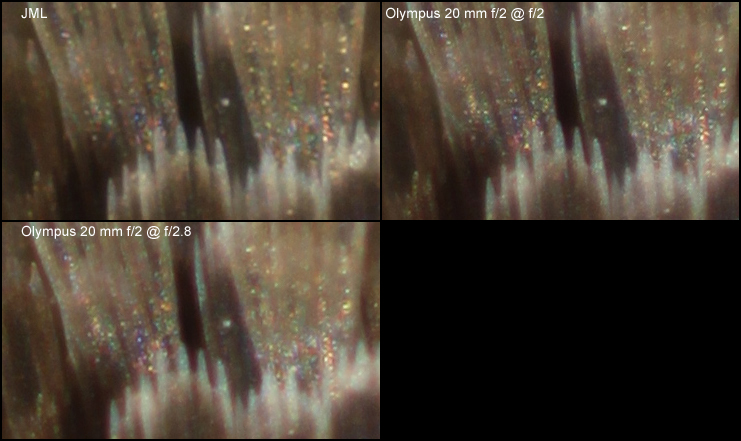
To my eye, it seems clear that the OM 20 has lost some resolution at its f2.8 setting versus wide open, but it doesn't get quite down to the JML.
We have to speculate, since I don't have a 20/3.5 to test. But in your test the JML is significantly better. I have trouble believing that the results would get reversed simply by putting both lenses on a smaller, finer pitch sensor.How would the JML lens compare to the Olympus 20mm f/3.5 on the Canon T1i?
Periodically, people ask me how the OM 20/2.0 compares to an OM 20/3.5. I've always had to say I didn't have a clue. I guess now we have at least suggestive evidence that it's higher resolution, since my OM 20/2.0 beats my JML, and your JML beats your OM 20/3.5. Regarding CA, no information.
Yes, that's distinctly possible. If I simply resample my test results down to 50% pixels, kinda sorta making my pixels act as if they were 9.4 instead of 4.7, then the picture looks like this. It's awful hard to see the difference between JML and OM 20/2.0 at this scale.Regarding the two sensors used, how significant is the difference in pixel pitch, 8.45µm D700) vs 4.7µm (T1i)? Assuming that the two JML copies are optically identical, is it possible that the JML lens could provide near sensor-limited resolution to the D700, even though the results are poor on the T1i?
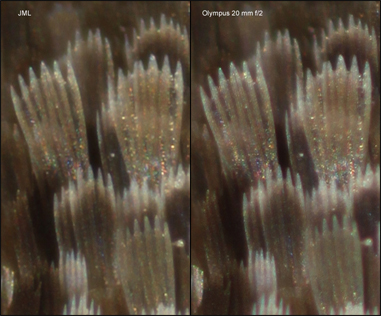
The first answer is "of course not", but the situation is not quite that simple.It is clear that smaller dimension sensors, with finer pixel pitch are a good match for high-NA microscope objectives. However, are they an equally good match for true macro lenses which were designed and optimized to cover a 43mm image circle?
At 7.5X, the 36 mm sensor images an area that is 4.8 mm on subject. To image the same subject, the 22.3 mm sensor only needs to operate at 4.64X. Assuming a 20 mm lens and making the simplifying assumption that it acts thin, then the angle of view for the large sensor will be about 12.09 degrees, while the angle of view for the small sensor will be 11.28. So the two different sensors are not making dramatically different demands on the covering power of the lens. It's only a difference of about 1.07X, versus the 1.61X that you might think from just considering the sensor size. You have to take all the other scale factors into account also.
Now that's a hard question. The scaled image that I showed earlier in this post suggests that the 20 mm f/2 might be overkill for a D700 at this magnification. So in that sense, it would not be justified.How much difference in resolving power/apparent sharpness would be seen, on the D700, between the Olympus 20mm f/3.5 and the 20mm f/2? Is it enough to justify the high price (for making large prints, 13x19in or larger)?
On the other hand, since we're now talking price, I see that the D700 with 12 MP body is now being listed at B&H photo for $2470. I don't know what the Nikon equivalents are, but the Canon T1i with 15 MP is currently selling for $670 at B&H, and the 5D Mark II with 21 MP for $2500.
So it seems, just looking at the prices, that you have already decided to select equipment based on something other than resolution.
That decision -- to use a 12 MP 36x24 sensor, as opposed to a 15 MP 22x13, or a 21 mP 36x24 sensor, is now affecting your choice of lenses that cost a fraction of the price of your camera body. Someone with different equipment or goals will optimize to a different point.
I’m also a bit concerned that any novice members of the forum, who may have purchased this lens, may see the statements regarding low resolution on the T1i and dismiss it---without ever giving looking at its properties on their unique equipment, for their particular applications.
That is always a risk. Hopefully they will read the entire thread and think about their own applications, as it seems that Pierre has already done.
In re-reading this thread, I was struck by a couple of your earlier comments.
There are some similarities in our backgrounds, but I think some differences as well. My training is in numerical analysis and computer science. I recently retired from 38 years with an R&D lab, where much of my job was developing and validating computational models.I quickly learned the axiom, simplify, simplify and then simplify, again.
What I quickly learned was a little different: "Everything should be made as simple as possible, but no simpler". I have seen far too many cases where a straightforward end-to-end validation test under realistic conditions of interest showed that something important had been missed by more restricted unit testing.
In the case of lenses, what this means is that I will generally test first using subjects and setups that are typical of my intended use.
It happens, for example, that because I almost always stack and almost never image flat subjects, I don't care very much about flatness of field. I would much rather have a lens that is crisp corner to corner over a curved field, than a different lens that is admirably flat but not quite as sharp. Other people will have different priorities.
I try to model everything, and when the simple models don't work, I try to figure out why not. That's usually a frustrating exercise, though satisfying when it's all over. I've accumulated a modest collection of links to useful math, which I'll be happy to share.I haven’t attempted to run all the calculations to quantify the effects of the variables stated above. And frankly, although I have a background in applied mathematics, I’m still struggling to get my head around many of the mathematical relationships in this specialized field. I really need to construct a tabbed spreadsheet containing all of the pertinent equations, so I can run what-if experiments.
--Rik

